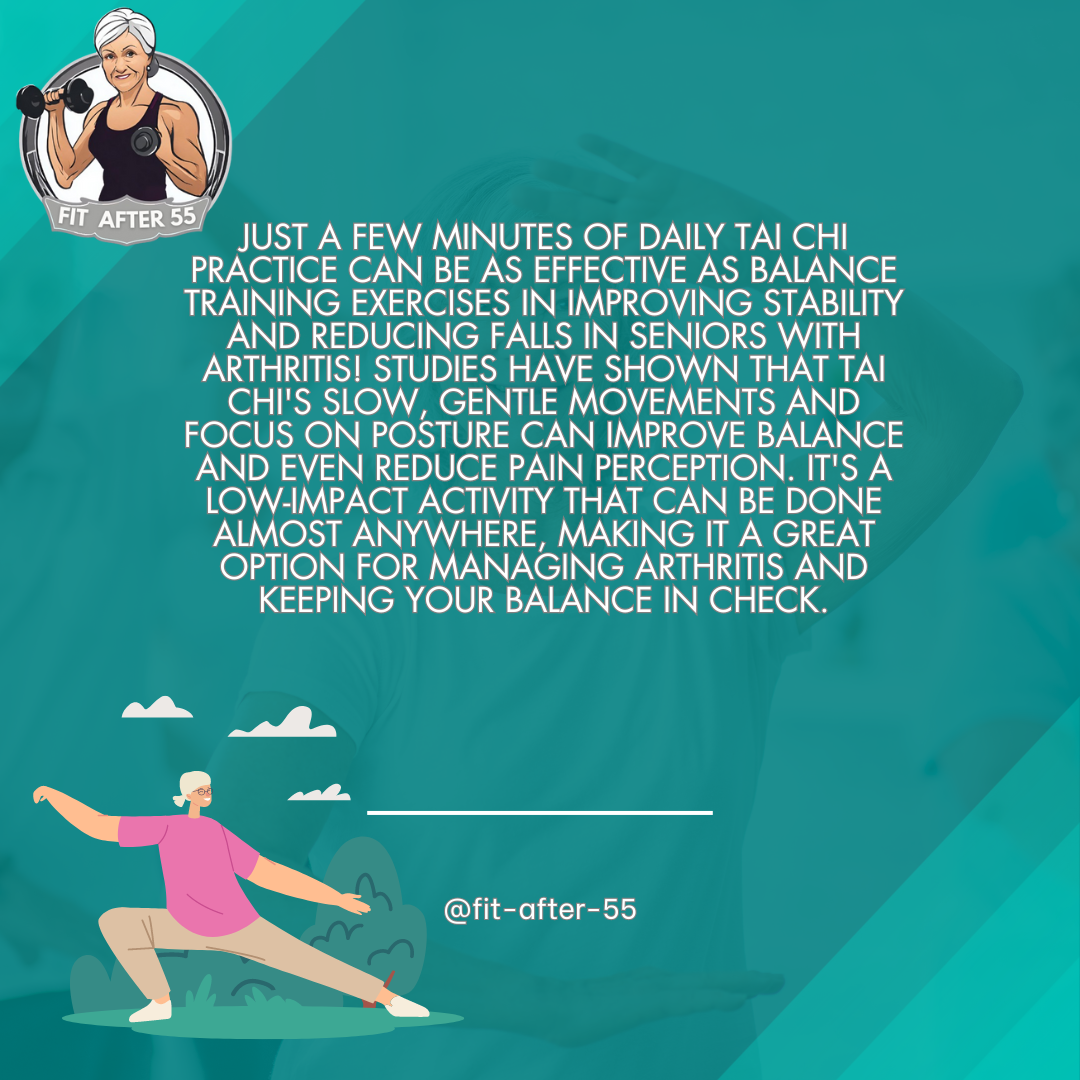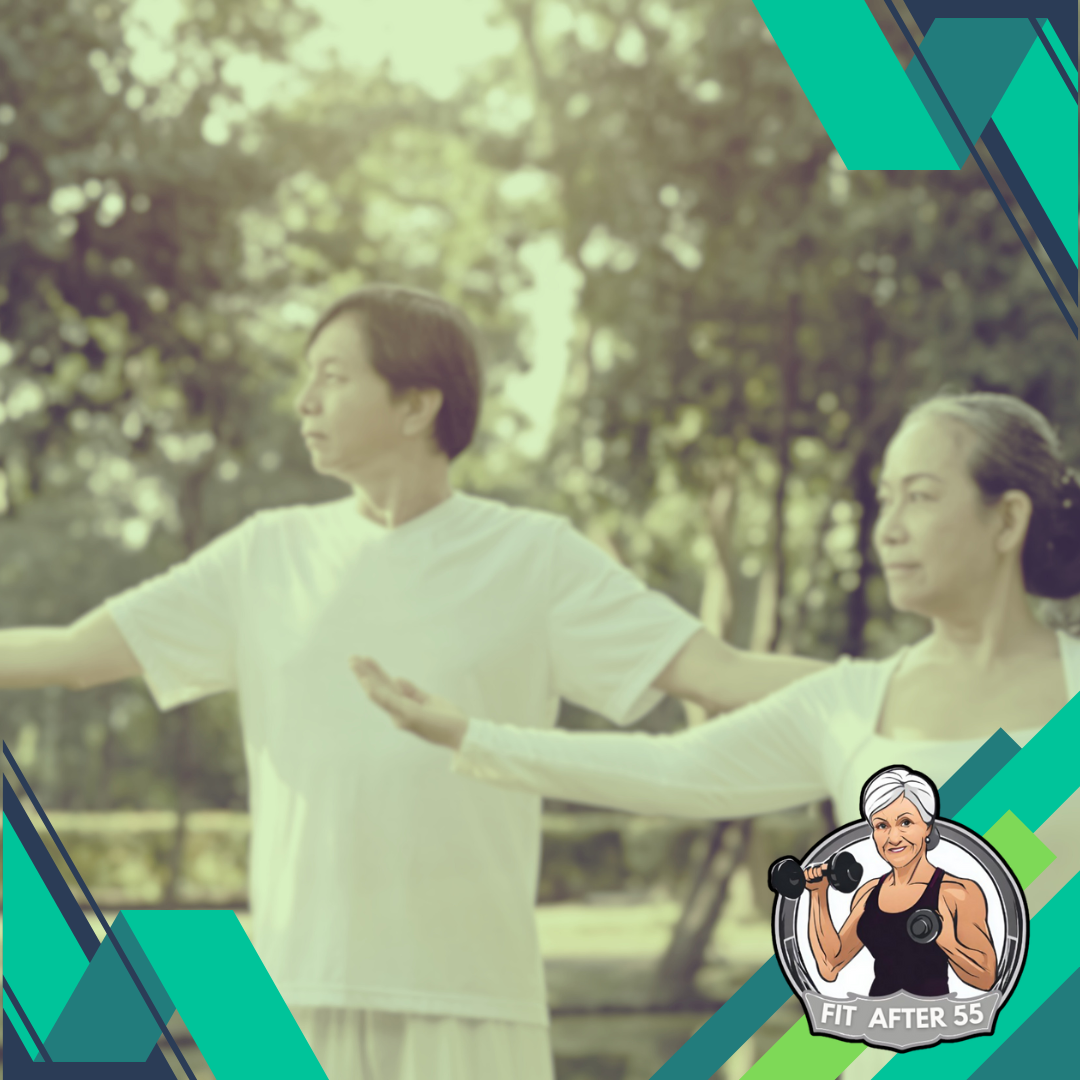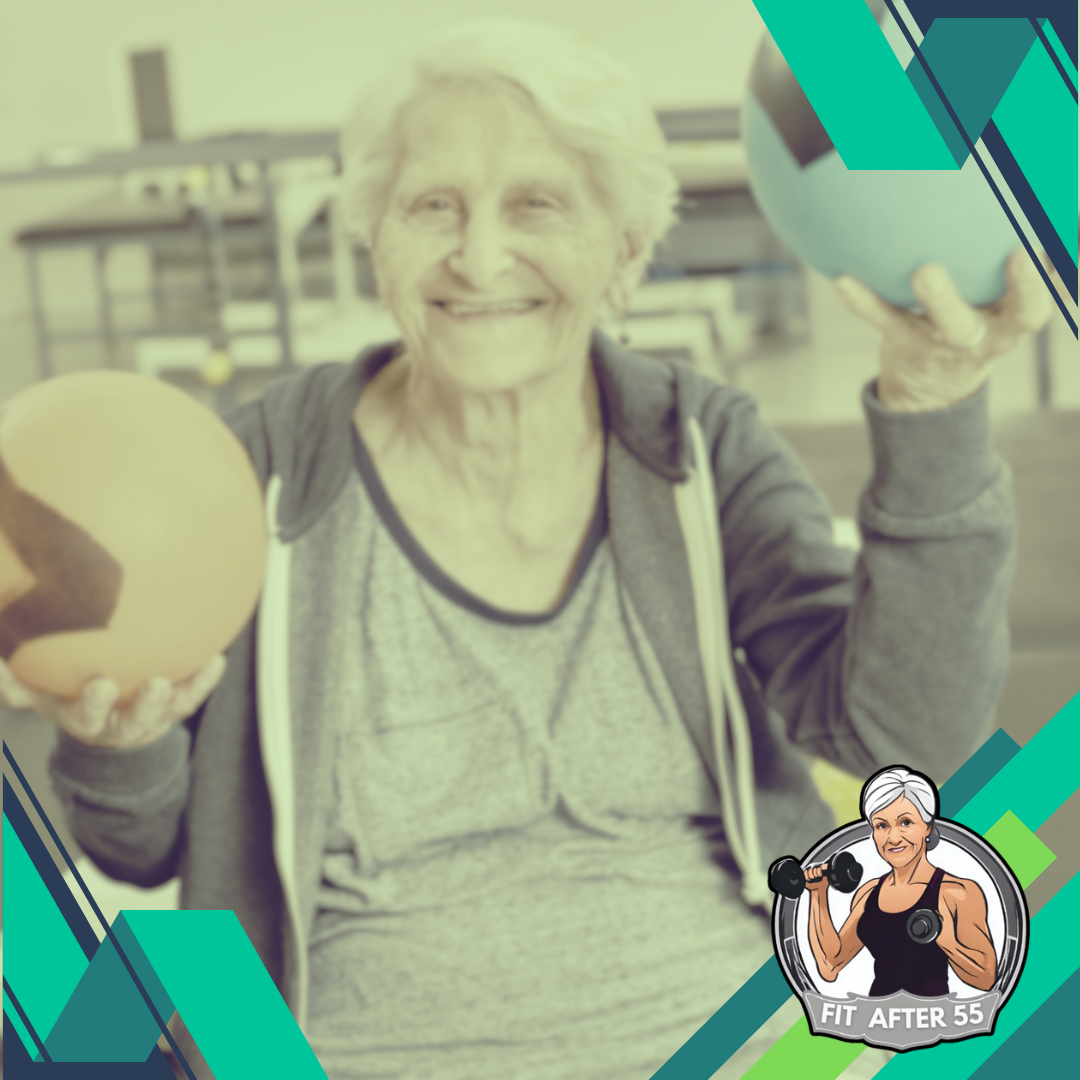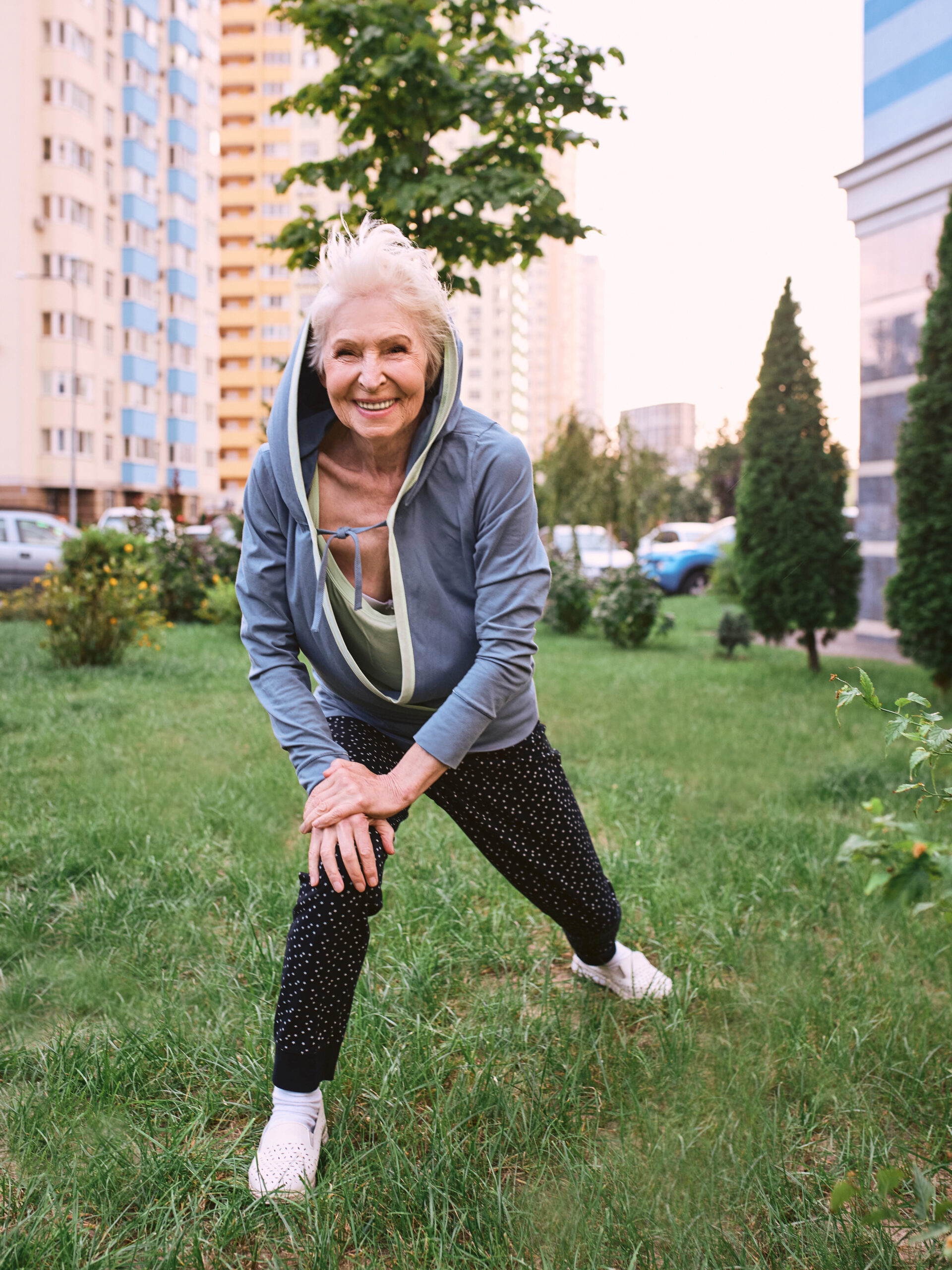Balance Training for Seniors with Arthritis: Remastering Stability and Living with Confidence
If you’re a senior dealing with arthritis, you’ve likely experienced how it can throw your balance off-kilter. Balance training, in my opinion, is a game-changer for maintaining stability and preventing falls, especially as we age. Balance training is so crucial for seniors, especially those with arthritis.

Imagine your body as a finely-tuned instrument that keeps you upright and moving smoothly. Balance is a key part of that instrument, and yes, arthritis can disrupt the melody. When your joints are stiff and painful, it’s harder to stay steady on your feet. Stability exercises help you fine-tune your balance again, making everyday tasks safer and more manageable.
Arthritis hits seniors particularly hard because it can limit mobility and diminish muscle strength, factors vital for good balance. As a senior, adapting to these changes isn’t just about maintaining the status quo; it’s about enhancing your body’s ability to stay centered and agile, which is where balance training shines.
Don’t worry too much about being a beginner. Balance training can be simple and adapted to suit your comfort level and capability. It’s all about starting from where you are and progressively building your balance. This isn’t just about avoiding falls; it’s also about taking control of your arthritis and improving your overall well-being.
You can always adjust your approach down the road, but understanding the basics of balance training right now lays a strong foundation for what’s to come. In the next section, we’re going to explore the many benefits of balance training, not just for managing arthritis, but also for enhancing your life in ways you may not have anticipated.
Key Takeaways:
- Balance training can improve stability and reduce fall risk for seniors with arthritis. This is achieved by strengthening muscles and improving joint mobility, allowing seniors to move with more ease and confidence.
- Balance training is a safe and effective way to manage arthritis. Simple exercises can be done at home and gradually increased in difficulty. It’s important to listen to your body and avoid exercises that cause pain.
- Balance training can improve overall quality of life for seniors with arthritis. By regaining stability and confidence, seniors can continue to participate in activities they enjoy and maintain their independence.
The Benefits of Balance Training for Arthritis Management
I’m about to dive into something that could really change the game for seniors dealing with arthritis: balance training. Now, this isn’t just about keeping steady on your feet; it’s also about empowering yourself to manage your arthritis better. Let’s look at how balance training does more than just prevent a stumble.

Improving Joint Mobility
If you’re wondering what’s in it for you, consider joint mobility. Arthritis can make your joints feel like they’re on permanent vacation – and not the fun kind. Balance training gently coaxes these joints back to work, improving their movement and, in turn, assisting in muscle strength development. Stronger muscles mean better support for your joints, which is a big win for pain reduction.
Reducing the Risk of Falls
Don’t worry too much about taking a tumble; balance training significantly cuts down this risk. Through stability exercises, your body learns to correct itself, even when life throws you a curveball. And if you’ve ever had a nasty fall, you know it’s something you’d rather not repeat. This training aims to keep you upright and out of harm’s way.

Enhancing Quality of Life
Lastly, you’re going to find out that balance training influences your overall quality of life. It gives you back some of that independence that arthritis may have tried to sneak away from you. Whether it’s getting out in the garden or playing with the grandkids, better balance means you can engage in daily activities with more confidence and less fear of pain.
So my question to you today is, why not use balance training to your advantage? It might not be a magic cure, but it’s a tool that can definitely help you achieve a more active and enjoyable lifestyle, despite arthritis.
Personal Stories: Seniors Who Regained Stability and Confidence
You’re going to find out about some inspiring individuals who took charge of their arthritis through balance training. These aren’t just characters in a story; they’re real people who’ve faced real challenges and overcome them. Their journeys illuminate the tangible benefits of balance training beyond clinical statistics.

Take, for instance, Maria, a 72-year-old who thought her gardening days were over. Arthritis had made standing precarious, and the fear of falling kept her indoors. But with a tailored balance training program, Maria gradually regained her stability. Today, she’s not only back in the garden but also volunteering at the community center, sharing her experience.
Then there’s James, who at 78, was skeptical about balance exercises making a dent in his life. However, after several weeks into the training, the difference was night and day. James noticed improved coordination, fewer aches, and the stamina to walk his grandson to the park — a small victory that, for James, meant the world.
These stories highlight what’s possible — the transformation isn’t just about steadier feet; it’s also about a richer, more active lifestyle. By gaining balance, seniors like Maria and James reclaim parts of their lives that arthritis had pushed just out of reach.
If you find that these experiences resonate with you, and you’re looking to reclaim your own sense of stability, it’s time to consider the safe balance exercises that can be specifically tailored to your needs. Don’t worry too much about where you currently stand; every senior has to start somewhere, and there’s no time like the present to begin.
Getting Started: Safe Balance Exercises for Seniors with Arthritis
If you’re grappling with arthritis and worried about your balance, I’ve got good news. Starting balance exercises can be both safe and effective, even if you’re feeling a bit unsteady right now. The key is to move at your own pace and listen to your body. Here’s how to begin.

Setting Up a Safe Exercise Space
First, choose a well-lit and clutter-free area in your home. This will minimize the risk of tripping and make you feel more secure as you exercise. Having a sturdy chair or a countertop nearby can provide support if you need it. You might even want to have someone there with you for a little extra assurance.
Initial Balance Exercises
Now, what exercises should you start with? Try standing on one leg, holding onto that chair for balance. When you feel ready, practice standing without support for a few seconds at a time. Then, you can test out walking heel-to-toe, which challenges your stability and coordination. Side-leg raises and balancing on a cushioned surface are also great places to start.
Focusing on Quality Over Quantity
Remember, it’s not a race. These exercises are about building a stronger you, slowly but surely. And don’t worry too much about whacking out dozens of reps. It’s more important to perform these movements with control and to focus on quality over quantity.
You can always adjust your approach down the road. If an exercise feels too easy, try it without holding onto anything. If it’s too difficult, break it down into simpler parts or perform it less frequently. Customizing the routine to suit your comfort and ability level is crucial.
Creating a Sustainable Balance Training Routine
I’m going to help you transform your occasional balance exercises into a part of your daily routine. Consistency is key. You can always adjust your approach down the road, but for now, let’s focus on the foundations.

| Topic | Details |
|---|---|
| Setting Goals | – Set realistic and attainable goals. |
| – Focus on progress, not perfection. | |
| – Choose goals that resonate with you (e.g., feeling steadier while walking or standing longer while cooking). | |
| Incorporating Balance Training | – Integrate balance training into daily routines. |
| – Examples: | |
| – Stand on one foot while brushing teeth. | |
| – Sit down and stand up from a chair without using hands during TV commercials. | |
| Maintaining Motivation | – Understand that maintaining motivation can be challenging, especially during arthritis flare-ups. |
| – Remember that the first attempt doesn’t need to be the last. | |
| – Keep a log of exercise sessions to visualize progress. |
Don’t worry too much about the logistics; starting is the most important step. I’m here to help you with any tweaks or changes, ensuring that your balance training journey is both effective and enjoyable.
Expert Insights: What Health Professionals Say About Balance Training
So, you’re getting serious about balance training, and that’s fantastic. In my experience, incorporating expert advice can make a significant difference. Let’s look at what physicians, physical therapists, and rheumatologists are saying about balance training for seniors with arthritis.
If you ask a physical therapist, they’ll tell you that balance exercises can work wonders for joint stability. They see patients improving their posture, coordination, and confidence every day. These professionals specialize in designing exercises that are gentle on the joints while still challenging your balance.

Rheumatologists, on the other hand, emphasize the importance of a comprehensive approach to arthritis management. They often recommend balance training as part of a broader treatment plan that may include medication, diet, and lifestyle changes.
Here’s something crucial: all health professionals agree that it’s important to listen to your body. The ‘no pain, no gain’ mantra doesn’t apply here. If an exercise causes pain, it’s time to stop and talk to your doctor. They might tweak your routine or suggest alternative exercises.
You might be wondering if there’s a best time to exercise or a best type of exercise. Most experts say consistency is key and recommend low-impact activities that you enjoy. This could be anything from tai chi to simple heel-to-toe walking.
One thing is for sure, teamwork with your healthcare provider will empower you to take charge of your arthritis. Your progress should be monitored, and they’ll help you adjust the training as needed. And that’s a perfect segue into the importance of monitoring your progress, which I’ll cover in the next section.
Monitoring Your Progress and Adapting As You Age
You might be wondering how to keep track of your achievements and ensure your balance exercises remain effective over time. I’m here to help you with that. Tracking your balance and mobility improvements can serve as a powerful motivator and a tool to see the real-world impact of your efforts.

Keeping a Log
Start by keeping a simple log of your exercise routines, noting any changes in your ability to perform certain tasks or movements. Also, pay attention to how you feel during your day-to-day activities that require balance. Have you noticed it’s easier to navigate a crowded room or stand up from a chair? These small victories are significant.
Adapting Your Routine
As your body changes, it’s essential to adapt your balance routine to match your current abilities. This isn’t just about persistence; it’s also about smart adjustments. If you find certain exercises too challenging or if they cause discomfort, don’t hesitate to scale back or try something new. Always prioritize your safety and comfort.
Consulting Your Healthcare Provider
Regular check-ups with your healthcare provider are crucial for ongoing arthritis management. They can offer valuable insights and updates to your exercise regimen, ensuring that you’re on the right track and reducing the risk of injury.
Embracing the Journey
Remember, your first attempt doesn’t need to be your last. Balance training is a journey, and as you travel along this path, embrace the changes that come with aging. Use it as an opportunity to understand your body better and to refine your routine continually. You can always adjust your approach down the road, so if something isn’t working for you, switch it up.
I really hope that you find these tips on monitoring and adjusting your balance training program useful. If you want to maintain your autonomy and keep doing the things you love, take these steps to stay on top of your game. Trust that with time, patience, and regular practice, you’ll not only manage your arthritis symptoms but also enhance your overall well-being.
Balance Training for Seniors with Arthritis: Your Path to a More Confident and Enjoyable Life
Balance training for seniors with arthritis can feel daunting. Maybe you envision complicated exercises or worry about pushing yourself too hard. But what if I told you that regaining stability could be the key to unlocking a more confident and enjoyable life, even with arthritis? This guide will show you how simple exercises and a tailored routine can empower you to move with greater ease, reduce your fall risk, and keep doing the activities you love. So, ditch the fear and dive into the world of balance training – it might just surprise you at how much better you can feel.

Throughout this guide, we’ve explored the many benefits balance training offers seniors with arthritis. Imagine your body as a finely tuned instrument – when your joints are stiff and painful, it throws off the melody of movement. Balance training helps you fine-tune that instrument again, leading to improved joint mobility, stronger muscles for better joint support, and a significant reduction in pain.
Remember, Maria wasn’t sure she’d ever garden again, and James thought walks with his grandson were a distant dream. But with a little dedication and the right exercises, they both found their way back to the activities they love. The beauty of balance training is that it’s all about you. You can start slow, tailor exercises to your needs, and listen to your body. Don’t let the fear of a fall hold you back – with the tips in this guide, you’ll be well on your way to a stronger, steadier you.
So, what are you waiting for? Grab a chair for support, find a clear space, and take the first step towards a more fulfilling life. Remember, it’s never too late to take charge of your arthritis and rediscover the joy of movement.
Frequently Asked Questions
Is balance training safe for everyone with arthritis?
What if I find the exercises too difficult?
How often should I do balance exercises?
Stay Active, Stay Connected: Your Guide to Fitness After 55!
Looking for fitness tips, product reviews, and a supportive community? Look no further! Visit our website [fit-after-55.com] for expert advice and connect with other seniors and fitness enthusiasts on our Facebook page [https://www.facebook.com/profile.php?id=61557390788711]. Together, let’s age strong and live life to the fullest!

